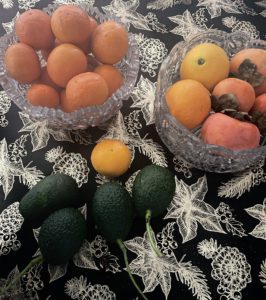Smart ecosystems are a silver lining from the pandemic when there was a spurt in home gardening. Coupled with plenty of time on our hands, the need for hobbies led to increasing sales of seeds, planters, and materials for in-home gardens. This led the gardening industry to create smart planters for small spaces. Indoor hydroponics became a trend in that they only require fertilizer and water. Small aquaponics units could house fish and grow herbs. In contrast, vertical towers could be placed along cabinets or balconies. This new market of smart ecosystems allows consumers to depend less on supermarkets, supplies nutrient-dense produce, and promotes sustainability.
Hydroponics Smart Ecosystems

Hydroponics have existed since ancient times to grow produce efficiently. This is seen with Mesoamerican cultures that wove reeds and put them under floating mud pallets to anchor vegetation. However, most people don’t know what it is. In a basic sense, the setup requires light, a growing tray, and a drain for excess runoff. Underneath requires a tube for water and a reservoir that has the pump and fertilizer.
What makes this easy for consumers is it doesn’t require soil, or knowledge for gardening. Most of these kits can be bought and have their own artificial intelligence app that will inform actions to take. No soil is necessary, as plant roots are exposed in their growing tray so that the fertilizer in the water feeds them. LED lights ensure a stable environment. There are varieties of different sizes so individuals can grow herbs, or vegetables if they wish.
Aquaponics Smart Ecosystems
Aquaponics were in practice by ancient civilizations as well. An example is rice being grown on floating islands, where fish would be underneath, and duck enclosures would hang over the fish to keep the water full of natural fertilizer. So, it is not a closed-loop system. Plants grow on top in a tray, then instead of a water reservoir at the bottom, a fish tank will thrive to support the plants. Instead of fertilizer, bacteria eat fish excrement, which then plants absorb.
 This means the water doesn’t need to be changed out as often as in hydroponics as the harmony of the process ensures the water gets cleaned. Besides growing produce, individuals now can harvest the fish. If this is the case it will take up substantially more space, requiring perhaps a greenhouse or garage. For smaller living quarters, it may not be realistic to eat fish, but it can still be an environmentally friendly hobby.
This means the water doesn’t need to be changed out as often as in hydroponics as the harmony of the process ensures the water gets cleaned. Besides growing produce, individuals now can harvest the fish. If this is the case it will take up substantially more space, requiring perhaps a greenhouse or garage. For smaller living quarters, it may not be realistic to eat fish, but it can still be an environmentally friendly hobby.
Vertical Smart Ecosystems
Vertical gardening, similar to hydroponics and aquaponics, can is useful for smart ecosystems inside homes. The market expansion of white sleek towers that grow a couple to thirty plant varieties is something to marvel at. These plant towers need less labor, also with the assistance of artificial intelligence help to make almost anyone have a green thumb. Vertical towers have become popular in that they can be movable. Now, this doesn’t stop with plant towers. There’s been an expansion on products for stacking waterproof planters on top of shelves or walls. This reduces water waste, pollution, and pests while increasing the square footage of yielding produce. This can range from small herb gardens to fruits and vegetables. Ideas of what plants to grow are peas, beans, potatoes, tomatoes, cucumbers, strawberries, grapes, kiwi, passionfruit, and herbs.
Sustainable Benefits
These three smart ecosystems are a positive trend to have resulted from the pandemic. They promote sustainability by relying less on industrial farming. Cutting transportation, maintaining nutrition density, and using less harmful chemicals. The downside is many of these products are not affordable to all. Also, the time it takes to see results does take a season or more. As with any new product, in time future versions hope to be more cost available to wider audiences. While a consumer’s entire diet may not replace with one of the above methods, it does open doors to replace some grocery reliance. It is impressive to cook with homegrown ingredients, worthy of telling dinner guests.

